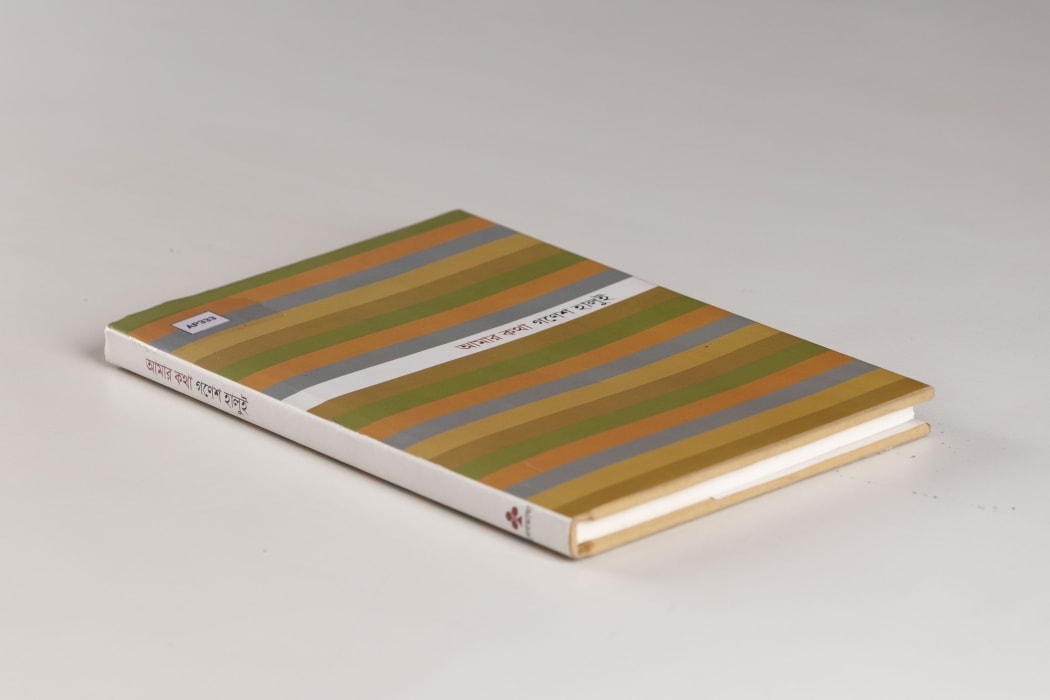
Author: Ganesh Haloi
Dimension: 8.5 X 5.5 inches
Type: Hardcover
Number of illustrations: 5
Publisher: Debbhasha
Number of pages: 88
'Our thinking is gone, but our thoughts continue.
Reasoning ceases, but knowledge remains.'
The above lines by the Buddha capture the essence of Ganesh Haloi's artistic experience. Striving for artistic enlightenment and a burning hunger for knowledge and learning, he came as a small boy from Jamalpur, a small town in undivided Bengal, to Kolkata, West Bengal, in the 1950s. The artist's autobiography, Amar Katha, published by Debbhasha, brings together the experiences of his childhood, adolescence and youth in an unbelievably candid nature.
As we flip through the first twenty pages of this memoir, we are bound to believe that the author acknowledged his purpose in this life from a very young age: to create art. The boy's curiosity and attention to every minute detail of animate and inanimate things around him built a solid basis for pursuing art as his interest in later life. From the flickers in the local goldsmith's workshop to the fishes in the dark pond water in his native village and the pattern of the fishnets- everything fascinated him and created artistic forms in his head. In his early teens, he tried sketching and watercolour, immersing himself in the natural worlds of Bangladesh and the magic of its colours. In Amar Katha, he narrates that his first experience with oil paints turned out to be quite a droll as he repeatedly tried to mix it with water!

Haloi had to leave behind his early years in this paradise of innocence and unadulterated beauty and migrate to the other side of the border during the communal riots of the 1947 Partition. To him and lakhs of other people, independence was a myth, far away from the crude reality. Uprooted from his homeland overnight and being thrown into the Ranaghat Refugee Colony left a profound and permanent impact on the artist's mind and his artistic expression. The pains of Partition and the experience of living as a refugee for many years find articulation in his paintings' strokes and etched lines.
The book Amar Katha is divided into short, crisp chapters, almost chronologically tracing the artist's life. In each chapter, the artist focuses on placing his in-depth experiences in that segment of his life while positioning it within the broader socio-cultural context. For example, the first two chapters talk about his childhood in Jamalpur: the fragrances, images and senses attached to the artist's memories of that place and the formative years played a crucial role in shaping his artistic conscience. The fourth and fifth chapters of the book narrate the artist's experiences in Kolkata. While they primarily focus on the days of Calcutta Art College, they also tell the sickening story of the refugee camps and the violence and trauma that the Partition experiences brought into the artist's mindscape.
However, the episode that the artist cum narrator seems to be most passionate about is when he went to work in the Ajanta Caves of Maharashtra on a project under the Archaeological Survey of India. The depth of greenery and the charming monsoons of the region, the simplicity of the Marathi villagers and the inexplicable beauty of the ancient cave paintings and rock-cut architecture mesmerised the artist. The book ends with a rather painful paragraph where the artist recalls the memories of his father and his native village, Jamalpur, in Bangladesh.
"I often wonder, who am I?
Am I still the boy from the banks of the Brahmaputra?
Something strange plays upon those boundless waters of the river and the endless sand banks, perhaps the memories of the bygone days. I still sense my father's smell from dried silk strings."
The book laments the identity crises of those uprooted from their homelands, never to find permanence in their lives. Simultaneously, it also focuses on the beauty of the quest and building a new identity in a new land. The strength of the book unquestionably lies in presenting picturesque descriptions of actual experiences with utmost honesty. The artist has bestowed this book with five new sketches, and the cover design by Krishnendu Chaki does justice to Holoi's profound and passionate narrative.

Srilagna is an art and culture buff who is interested in the public history of South Asia. She is a part-time researcher and archivist, full-time foodie and animal lover.